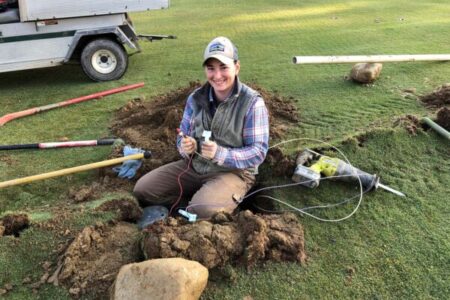Company Overview
GOLF+ is the leading virtual reality golf game in the world, designed to make the sport more accessible to everyone. Founded by entrepreneurs Ryan Engle and Rob Holzhauer, the company has evolved from an augmented reality putting app in 2018 to become the “Official Virtual Reality Golf Game of the PGA TOUR” through a long-term partnership announced in 2022.
GOLF+ removes traditional barriers to golf such as time constraints, greens fees, and weather, allowing users to play anywhere, anytime. The platform serves newcomers by offering a stress-free introduction to golf in a non-intimidating environment. For avid golfers, it provides realistic physics and life-like recreations of iconic courses. In addition to single player or multiplayer capabilities, GOLF+ offers weekly and daily tour events, with multiple rounds on one course or seven daily tournaments on various courses.
Strategic Vision
As articulated by CEO Ryan Engle: “We’ve spent countless hours honing the GOLF+ experience to be as close to the real sport as possible, but it’s not an alternative or replacement to traditional golf. It’s a new way to experience the game and our goal with GOLF+ is to bring golf into the lives of as many people as possible.”
Key Facts:
- Over xxx million shots hit by users through first xx years of full course play
- Available on Meta Quest 2 platform, and….
- Features virtual reproductions of iconic courses including Pebble Beach, St Andrews, Pinehurst No. 2, TPC Sawgrass, Kiawah Island, Wolf Creek, Yale, East Lake, Valhalla, and more
- Growing community of participants/users
- Strategic partnerships with PGA TOUR, TopGolf, PXG, and PGA of America
- Notable investors include Rory McIlroy, Jordan Spieth, Ben Crenshaw, Tom Brady, Steph Curry, and Mike Trout
- Investment round led by Breyer Capital
Product Features
- Full course play on renowned golf courses
- Realistic physics engine
- Social gameplay options
- Stat calculations within in-game profile
- TopGolf virtual venue
- PGA TOUR exclusive content and tournament features
- Interactive content tied to real-world tournaments
Future Plans
- Expansion of PGA TOUR experiences
- Addition of new course offerings
- Enhancement of virtual reality technology
- Development of exclusive, interactive content
- Growth of social gaming features
KEY TAKEAWAYS
GOLF+ has emerged as the dominant force in virtual reality golf, backed by significant investment from sports and technology leaders. The company’s focus on accessibility and realistic gameplay, combined with major partnerships and celebrity backing, positions it for continued growth in the expanding VR gaming market.





